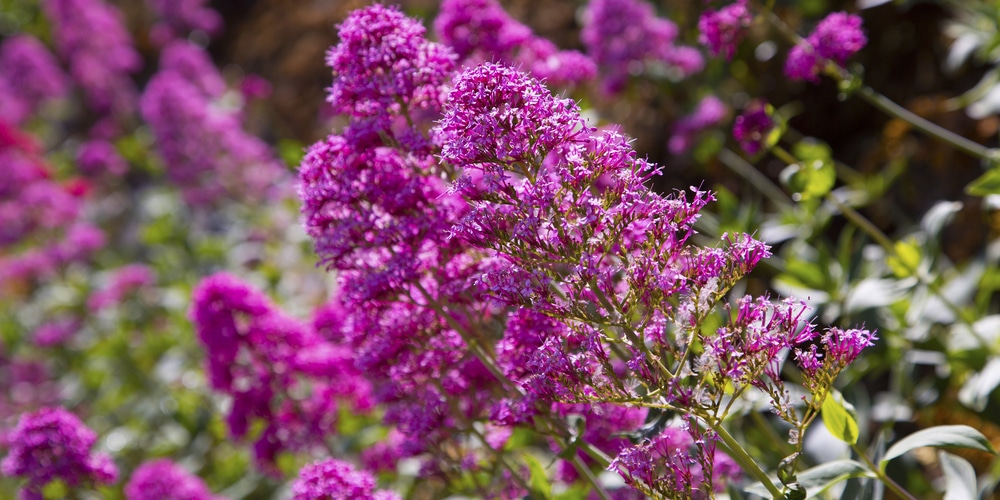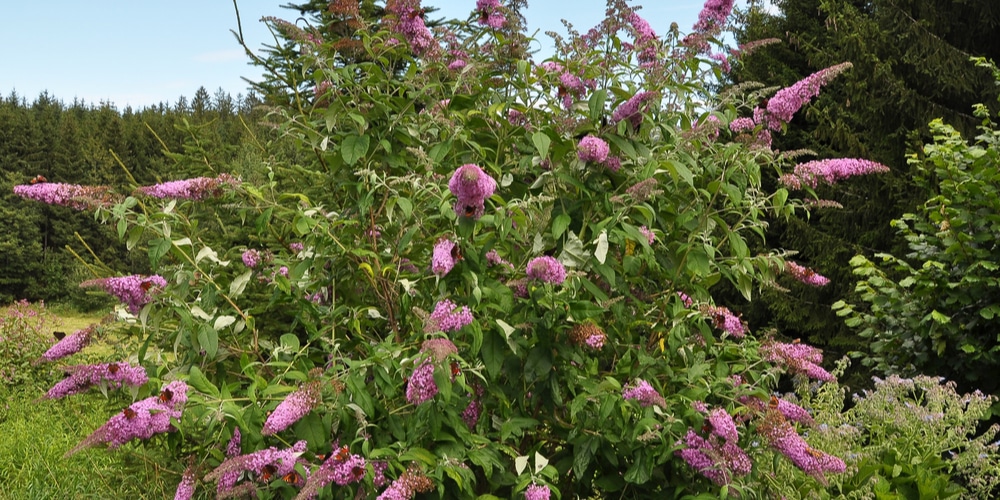The butterfly bush is a hardy plant that produces large purple flowers in the late summer and fall months. Growing to about 3 feet, this perennial bush will be at its peak from July through September. Here is reasons for butterfly bush leaves curling and how to grow and care for your plant.
How To Plant The Butterfly Bush

The butterfly bush is considered deer resistant, making it an ideal choice for people living in areas with heavy deer populations. Apart from that, the butterfly bushes are a beautiful addition to any garden, and they are also known for attracting butterflies, bees, and hummingbirds.
They provide food for these animals, which is vital to the ecology of the environment.
Potting size
You will need an enormous container to hold the roots and soil yet still be easy enough to carry. If planting one bush, use a container at least 18 inches deep with an 8-12 inches width. For two bushes, use something 24 inches deep with 12-18 inch wide sides.
Potting soil
It is recommended to use high-quality potting soil that is light and contains some organic material when planting the butterfly bush. Do not mistake using garden soil; it will compact and leave the roots without any air or water.
You can buy soil that has been pre-fertilized by mixing in compost, but if you make your compost first, this step is not necessary. After adding the soil to the container, add a little more compost on top of the existing layer – just an inch or so over everything.
Either break up the roots gently with your fingers or give them a good washing. If the roots are large and knobby, cut them into smaller sections with a sharp knife (make sure you sterilize it first).
Plant it at least 18 inches away from buildings or fences (the thicket of stems can cause problems with traffic or animal pests).
Fertilizer
Add appropriately an inch of compost on top of everything. Then water the container thoroughly until water flows out the bottom of the container. Now add more soil, compost, and water until everything is nicely covered.
Ensure the soil is firm but not hard as a rock. If you cannot get the soil to settle well, add more compost and use a garden trowel to even everything out to level across all container parts.
Reasons for Butterfly Bush Leaves Curling Up
Winter conditions
The tender, new leaves on your butterfly bush are very vulnerable in the winter months. They are tiny, making them highly susceptible to wind and cold weather damage. Additionally, the small leaf size means that even more surface area is vulnerable to damage from freezing temperatures.
Although most butterfly bushes can take a light freeze and bounce right back, if the temperatures dip below 25 degrees Fahrenheit for an extended period, the leaves will start to curl up as a defense mechanism.
In particular, during long periods of freezing weather and severely cold temperatures, the leaf stomata on your butterfly bush will close up to prevent ice build-up inside the leaves and stems. This process is critical to helping your butterfly bush stay healthy during harsh winters!
The temperature gets too cold at a certain point in the fall, usually during October or November, for these plants to keep their leaves open and green, so they have begun to curl up.
The best thing you can do for these plants is to move them into a warmer location soon after this occurs. You can also help avoid this by taking extra precautions when handling your plant, such as wearing gloves or wrapping it in paper towels and keeping it moist during the winter months.
Heat Damage
If your butterfly bush is positioned in full sun, the top of the soil or container can heat up to a dangerous temperature. Although a plant with leaves cannot get a sunburn, too much direct sunlight can lead to heat damage on the top 1-2 inches of a soil bed or container.
Likewise, adding mulch to the soil or container can add an extra 4-6 inches of insulation and worsen the situation. It is best to water your butterfly bush during the late evening hours and avoid using a lot of mulch.
Aphids and mealybugs
If you notice yellow leaves with tiny brown specks like other plants, you probably have aphids in your garden. These tiny bugs can suck out all of the life from your butterfly bush leaves very quickly and lead them to start curling up as a defense mechanism.
Mealybugs are another common garden pest that causes butterfly bush leaves to curl up and fall off. These white bugs look like cotton balls and tend to congregate on the younger leaves of your butterfly bush plants.
The butterfly bush is perfect for many locations like near ponds, streams, waterfalls, or other wet areas where they will thrive with no additional watering needed.
They need well-drained soil but can also be planted in moist areas regularly visited by humans as long as there is a dry area nearby for the moisture to drain away from them once it collects on the leaves and stems of this plant between watering.
The butterfly bush prefers full sun and does not tolerate cold temperatures.
Related Article: Butterfly Bush Texas

